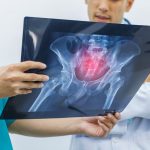
Enhancing Life. Excelling in Care.
The Orthopedics and Traumatology Unit deals with all pathologies of the musculoskeletal system; the team uses a multidisciplinary approach, collaborating with consultants specializing in neurology, neurosurgery, and functional re-education. In addition to the classic ordinary hospitalization, Patients can also be treated in a Day Surgery or complex Outpatient setting: the choice is made taking into account regional directives and the needs of each Patient.
The Operational Unit deals with:
- Prosthetic surgery (treatment of hip, knee and shoulder pathology)
- Knee surgery
- Hand and wrist surgery (treatment of canalicular syndromes, Dupuytren’s disease, trigger fingers, rhizoarthrosis, congenital or acquired post-traumatic deformities)
- Foot surgery (hallux valgus, hammer toes, metatarsargia, talalgia with axial deviation of the heel, flat foot, pes cavus, etc.)
- Spine surgery (treatment of lumbosacral disc herniation)
- Post-traumatological surgery (treatment of all types of articular or meta-diaphyseal fractures of the various skeletal segments)
- Traumatic and post-traumatic pathologies
The most modern arthroscopic techniques are applied such as:
- Knee atroscopy (meniscal lesions, ligament lesions, osteocartilaginous lesions, ligament reconstruction)
- Shoulder arthroscopy (arthroscopic reconstruction of rotator cuff lesions, capsulo-glenohumeral lesions due to post-traumatic instability, acromioplasty in subacromial impingement syndromes, osteo-cartilaginous lesions)
The knee prosthesis:
Knee arthroplasty is a safe surgical procedure for the treatment of knee osteoarthritis. It is an operation that can be easily performed even in patients over 75 years of age. The recovery of complete and autonomous walking is very early, approximately 15-20 days. The operation is performed mainly in patients suffering from osteoarthritis. In arthritic disease, friction occurs in the sliding of the joint heads which is responsible for stiffness, swelling, functional incapacity and above all pain.
Hip prosthesis:
It is necessary in all so-called primary and secondary coxarthrosis attributable to supervening joint deformities, or to femoro-acetabular conflict, or to the after-effects of a fracture of the femoral head, very frequent in falls in elderly people or when medical and physiotherapeutic treatments are not more able to keep this painful and disabling pathology under control. Depending on the age, the patient, after a stay ranging from 5 to 8 days in the hospital, begins a rehabilitation program. If no problems or complications arise, the person who has undergone hip replacement surgery can expect to return to normal life after a period of six to eight weeks. The operation is not excessively invasive and involves modest post-operative risks.

 The Villa Letizia private clinic has been a point of reference for the whole of central Italy for more than 30 years now, selecting the best doctors in order to provide the best service to the patient. The services are provided privately or in agreement with the main insurance companies - pension funds.
The Villa Letizia private clinic has been a point of reference for the whole of central Italy for more than 30 years now, selecting the best doctors in order to provide the best service to the patient. The services are provided privately or in agreement with the main insurance companies - pension funds.




